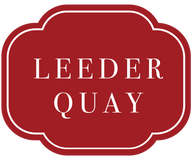Chief Tasting Officer's Corner - Food and Wine Pairing
I am often asked for suggestions as to what wine best pairs with certain foods for lunch / dinner / barbecue etc. Given the near infinite variations inherent in such match ups, I always fall back on a few tried and trusted basic principles as a base and then refine my suggestions. These tend to include "Weight" and"Occasion".
Weight means the texture of the wine versus that of the food on the menu, and this takes precedence over the colour of the wine. For contrast, the French are experts at pairing poultry with red wine, whereas most of us would settle for a white wine with some oak contact. Also pay attention to the sauces and condiments accompanying the main course, as these could produce marked differences to the mouthfeel of the food that may require a heavier body wine for balance.
Occasion also influences choice of wines. For example, beach barbecues would work better with screwcap reds that are low in tannin and amenable to a bit of chilling before consumption. Everyday home cooking calls for an everyday wine and a bottle to a dinner party should be at least a step up from your everyday wine.
For Chinese dinner / banquet, the safe play if bringing just one bottle would be a Bordeaux red blend with fine tannins. This is a combination of Chinese custom and tradition together with the stir fried style of cooking. If it is a local style seafood dinner, either a Chablis or a Sancerre would do the trick.
If still undecided at this point, go for the absolute back stop of a South African Methode Cap Classique sparkling wine. It looks like a Champagne, tastes like (sometimes better than!!) a Champagne but costs not much more than a Prosecco. It looks prestigious and is also a very versatile food wine.
If you are still going after that and like to finish with something sweet, the general rule I always go by is to make sure the dessert wine is as sweet if not sweeter than the dessert, for otherwise the wine will taste tart and acidic.
Above all, I strongly believe that when it comes to food and wine pairing, the food takes centre stage and the wine is the supporting cast. So choose accordingly and Bon Appetit!
Weight means the texture of the wine versus that of the food on the menu, and this takes precedence over the colour of the wine. For contrast, the French are experts at pairing poultry with red wine, whereas most of us would settle for a white wine with some oak contact. Also pay attention to the sauces and condiments accompanying the main course, as these could produce marked differences to the mouthfeel of the food that may require a heavier body wine for balance.
Occasion also influences choice of wines. For example, beach barbecues would work better with screwcap reds that are low in tannin and amenable to a bit of chilling before consumption. Everyday home cooking calls for an everyday wine and a bottle to a dinner party should be at least a step up from your everyday wine.
For Chinese dinner / banquet, the safe play if bringing just one bottle would be a Bordeaux red blend with fine tannins. This is a combination of Chinese custom and tradition together with the stir fried style of cooking. If it is a local style seafood dinner, either a Chablis or a Sancerre would do the trick.
If still undecided at this point, go for the absolute back stop of a South African Methode Cap Classique sparkling wine. It looks like a Champagne, tastes like (sometimes better than!!) a Champagne but costs not much more than a Prosecco. It looks prestigious and is also a very versatile food wine.
If you are still going after that and like to finish with something sweet, the general rule I always go by is to make sure the dessert wine is as sweet if not sweeter than the dessert, for otherwise the wine will taste tart and acidic.
Above all, I strongly believe that when it comes to food and wine pairing, the food takes centre stage and the wine is the supporting cast. So choose accordingly and Bon Appetit!
- Solomon Leeder, Chief Tasting Office

